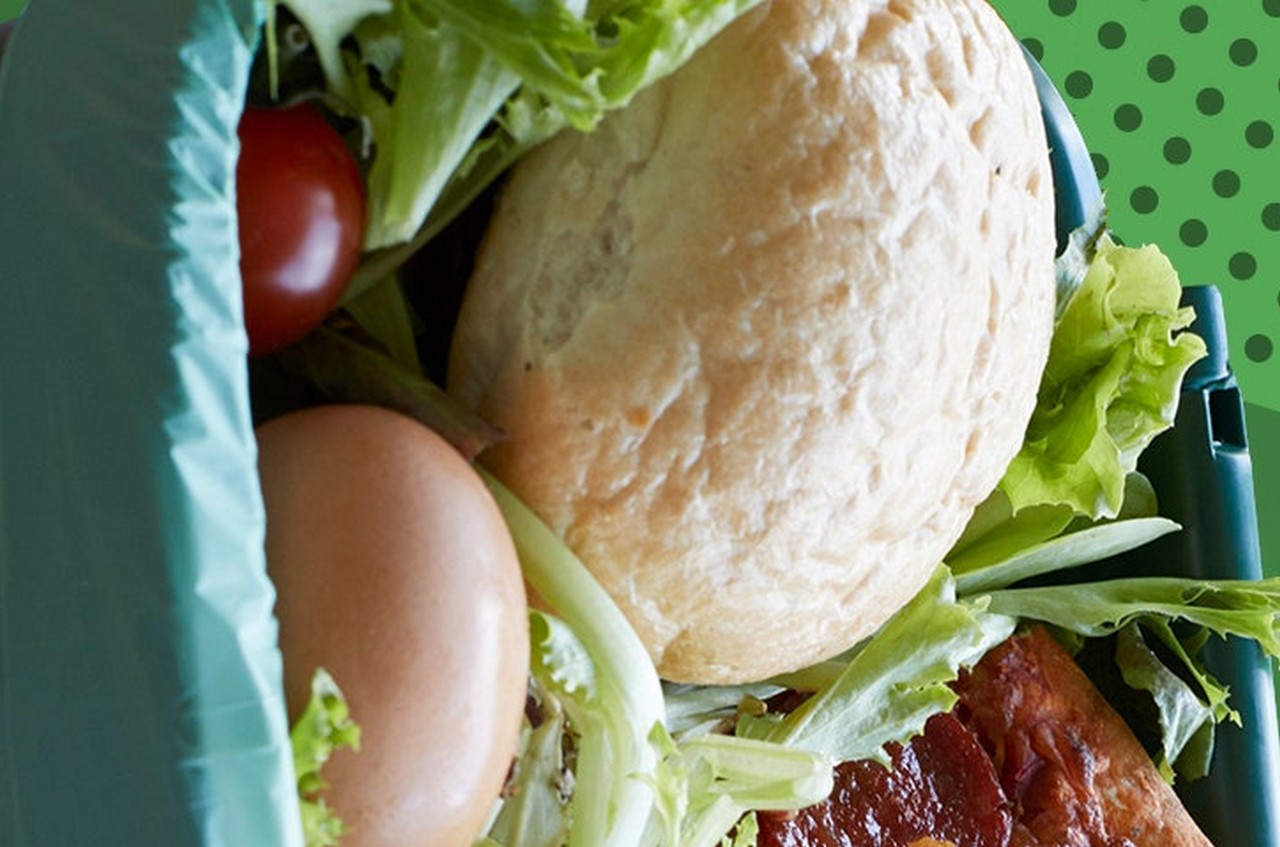How to Know if Food Has Gone Bad By Looking at It and Smelling It
Because I’m the type of person who buys a bunch of groceries at once and forgets (or just gets too lazy) to use them, I’m frequently left wondering if my food is still OK to eat. That’s also because it’s not always obvious when certain items have gone bad. Sometimes a package of chicken I have is supposed to expire in two days, but it already smells and looks kind of funny. On the other hand, I often hold onto a carton of eggs well past their expiration date and have yet to have any problems.
Let’s face it: Most of us have a few questionable items somewhere in the fridge. And at some point, what’s gross can turn into an actual danger.
“The problem is that bacteria can form, especially if you have a higher moisture level in the food,” says Christine Bruhn, food science professor at University of California-Davis and member of the Institute of Food Technologists. “That’s going to lead to all sorts of problems, and it can make you very sick.”
Instead of continuing to wonder if my not-so-fresh ingredients might make me sick, I decided to ask a few food experts how to know if your food is most likely still safe to eat or better off tossed, no matter what the date on the package says. Here, they break down all the signs you should watch out for, depending on the food in question.
Eggs
I once watched a roommate throw out an entire carton of eggs because they were one day past their expiration date, and I still haven’t recovered. Food-safety expert Jeff Nelkin says that most items will exceed their suggested shelf lives, and that this definitely includes eggs. So please, don’t do what my roommate did.
Instead, you can find out if they’re still good by cracking them open. Charles Mueller, Ph.D., R.D.N., clinical associate professor of nutrition at NYU, tells SELF that if eggs are runny, gray, or smelly, you definitely should toss them. But if they look and smell normal, they should be fine.
Also, it’s best to store eggs in the original carton—those cute little fridge inserts can breed bacteria, Bruhn advises. And if you’ve already cracked them and have them stored as some kind of make-ahead scrambled egg mix, then you’ve probably only got two days, tops, to use them.
Dairy
Some cheeses—like bleu cheese and brie—have edible mold. Others, like cheddar, Parmesan, and Swiss, are pretty good at resisting mold. But even for those sturdy types, hanging out in the back of your fridge for ages can weaken the defenses.
A bit of mold on your cheese doesn’t necessarily mean you have to throw it away. According to the Mayo Clinic, mold can’t penetrate semisoft and hard cheeses like Parmesan or cheddar, so only the piece with mold will contain any mold spores. Generally, you can simply cut off at least one inch surrounding the moldy area and enjoy the rest. If you have any doubt, though, Mueller says you should throw it out.
With some choices like shredded cheese, cream cheese, and cottage cheese, you’re going to want to chuck it, since the moisture level in those can make mold spores spread fast. Typically, you can tell that dairy products like cream cheese, sour cream, and milk are past their prime by the way they look and smell. Mueller says if they smell sour, they’ve separated, or they have any mold on them at all, into the bin they should go.
Meat
If you’ve noticed that the ground meat you bought only a day or two ago is already a little brown, Mueller says it’s probably no big deal. A bit of browning on your red meat doesn’t necessarily mean that it’s bad. If it’s tightly packaged in plastic, the color change is likely due to a lack of oxygen. As long as it doesn’t smell, it’s properly refrigerated at 40 degrees or below, and it’s not past its expiration date, he says it will be safe to eat. If it is past its expiration date, he says you should toss it.
You also want to avoid poultry that’s turned gray. For other kinds of meat, you can often use color as an indicator of safety: Whether you’re concerned about chicken, pork, or turkey, toss it if it’s not the same color as it was when you bought it. You should also say goodbye to any meat that smells sour or sulfurous, and if there are any signs of mold at all, throw it away.
Seafood
Bruhn says that smell is also a good indicator of whether seafood is still good or not. As a general rule of thumb, though, you should should aim to use any fresh seafood within the first day, because it won’t last longer than that in the fridge, says Mueller. If you want to hold onto it longer, tightly seal it and pop it in the freezer until you’re ready to eat it.
Fruits and vegetables
According to the USDA, you can still eat certain fruits and vegetables even if they have mold on them. Mold won’t penetrate denser, firm fruits and vegetables, like bell peppers or carrots, so they’ll still be edible as long as you cut off at least one inch around and underneath the mold spot. On the other hand, mold easily penetrates softer fruits and veggies, like peaches and cucumbers, so they should definitely be tossed. (For more info on how to deal with moldy foods, go to the USDA’s website.)
When it comes to those slightly slimy greens in the bottom of a bag of spinach, Bruhn says they don’t actually cause much of a health danger. They’re just incredibly gross. “[Sliminess] is simply an indication that the cell walls are beginning to break down, and the moisture is causing decomposition,” she notes. Feel free to chuck the slimy leaves and keep the rest.
Deli meat
One type of slime is definitely not fit for your plate: the kind that might show up on meat. Deli slices in particular tend to get slimy after about a week, since they have a higher amount of water content compared to something like chicken breasts or pork chops. It’s around this time that they then begin to stink.
Most Popular
- 5 Less Obvious Signs of Seasonal Depression You Should Definitely Pay Attention To
By Maggie O’Neill
- 42 Creative Valentine’s Day Gifts for Guys
By Sarah Madaus
- Just Some Fun Sex Toys You and Your Partner Will Love
By Gabrielle Kassel
A little slime may be harmless if it’s caused by how the meat was first prepared (if it was brined, it might be that juice seeping out) but it may also be bacteria that’s forming as the meat’s tissue is breaking down. Best to be safe and eat it within three to five days.
Bread
Unlike cheese, you can’t simply cut off the moldy area of bread and eat the rest, says Mueller. Mold spores penetrate farther into the loaf than you can see, so the whole thing is contaminated even if it seems like only part of it is. If you know that you’ll only eat some of the bread you bought, you can easily save the rest for later by freezing it. Wrap it up tightly and use this guide to reheat and defrost it to perfection.
Oils and nut butters
Oils and nut butters past their prime are unlikely to give you a foodborne illness, but they will taste and smell bad the older they get, says Mueller. He says if you start to notice they taste or smell sour, that means their oil has oxidized and it’s time to throw them away.
When in doubt, throw it out.
The age-old wisdom isn’t just some quaint saying. In general, it’s best to follow your instincts. Bruhn says, “It’s all about temperature and time when it comes to food spoilage and bacteria. Keep track of those, use your sense of smell, and if something seems suspicious, it’s not worth it. Just throw it away.”
Additional reporting by Elizabeth Millard.
No 2 People With Depression Have the Exact Same Experience — a Psychologist Explains
One in five US adults experienced mental illness in 2019. Toward the end of 2020, a year t…

















